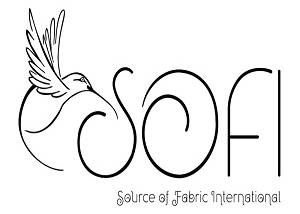When it comes to selecting fabric for curtains or backdrops, the decision can dramatically impact the look and feel of your space. Whether you’re aiming for a cozy, intimate setting or a grand, dramatic effect, choosing the right fabric is key. This article will guide you through the essential considerations to ensure you make the best choice for your needs.
1. Understand Your Needs
The first step in choosing fabric for curtains or backdrops is to clearly define your purpose. Are you seeking privacy, light control, or purely decorative elements? Understanding the primary function will help narrow down your options. For instance, heavy fabrics like velvet are excellent for blocking light and sound, making them ideal for bedrooms or theaters, while lighter fabrics like chiffon or cotton voile work well in spaces where you want to maintain a light, airy feel.
2. Consider Fabric Weight and Texture
The weight and texture of the fabric play crucial roles in its suitability for curtains or backdrops. Heavyweight fabrics like velvet or wool can add a luxurious feel and provide excellent coverage, while lighter fabrics such as linen or cotton allow for more natural light and movement. The texture should also align with the room’s aesthetic—smooth, sleek fabrics contribute to a modern look, while rougher, more tactile materials add a rustic or casual vibe.
3. Evaluate Durability
Durability is a significant factor, especially if the fabric will be exposed to sunlight or frequent use. Fabrics like polyester blends are known for their strength and longevity, making them a practical choice for high-traffic areas. Natural fibers like cotton or silk may offer a more luxurious feel but can be prone to fading and wear over time.
4. Think About Light Control
One of the primary functions of curtains and backdrops is to control light. Consider how much light you want to filter through the fabric. Blackout curtains, often made from tightly woven fabrics or featuring an additional lining, are ideal for bedrooms or media rooms where darkness is essential. On the other hand, sheer fabrics allow light to pass through, creating a soft, diffused glow that enhances the ambiance of a room.
5. Color and Pattern Choices
Choosing the right color and pattern is critical for achieving the desired effect. Lighter colors tend to make a space feel larger and more open, while darker tones can add warmth and coziness. Patterns can either complement or clash with existing decor, so consider the room’s overall design before making a selection. For a timeless look, neutral colors and classic patterns like stripes or florals are safe bets.
6. Fabric Maintenance
Consider the maintenance required for the fabric. Some fabrics are easy to clean and care for, while others may require special handling. For instance, machine-washable fabrics like cotton or polyester are convenient for households with children or pets. However, delicate materials like silk or wool may require professional cleaning to maintain their appearance.
7. Consider the Fabric’s Drapability
Capability refers to how well the fabric hangs. Some fabrics, like velvet or brocade, have a stiff drape and will create dramatic, structured folds. Others, like silk or linen, have a softer drape that creates a more fluid and relaxed appearance. The capability should align with the style you want to achieve in your space.
8. Budget Considerations
Fabric costs can vary widely, so it’s essential to set a budget before you start shopping. Keep in mind that higher-quality fabrics often come with a higher price tag but may offer better durability and a more luxurious appearance. If you’re on a tight budget, consider blends or synthetic options that mimic the look and feel of more expensive fabrics.
9. Sustainability and Fabric Choice
With the growing emphasis on sustainability, many people are looking for eco-friendly fabric options. Organic cotton, linen, and recycled polyester are excellent choices for those wanting to reduce their environmental impact. Additionally, purchasing fabrics from suppliers who prioritize sustainable practices can contribute to a more eco-conscious home. Read More About 7 Essential Fabrics to Complete Your Fashion Design Dream
10. Seek Professional Advice
If you’re unsure about which fabric to choose, don’t hesitate to seek professional advice. Fabric suppliers like Sofi can offer guidance based on your specific needs, whether you’re looking for fabrics that enhance a room’s design or provide practical solutions like light control or durability.
Conclusion
Choosing the right fabric for curtains or backdrops is an art that combines practicality with aesthetics. By considering factors such as fabric weight, durability, light control, and color, you can create a space that is both functional and beautiful. Remember, Sofi provides a wide range of wholesale fabric solutions, making it easier to find the perfect material for your project. Whether you’re updating your home or setting the stage for an event, the right fabric choice can make all the difference.


